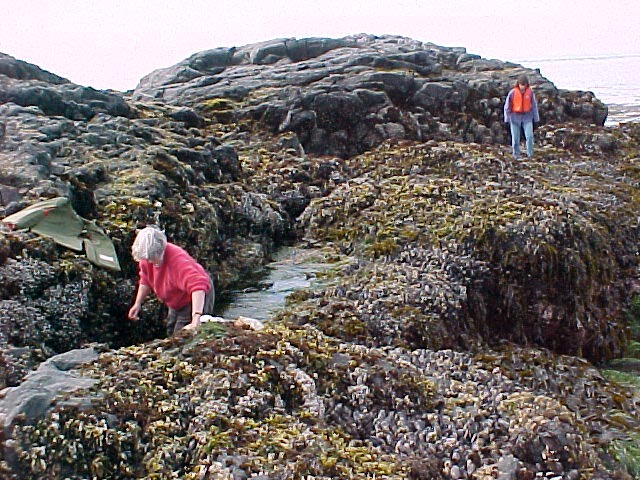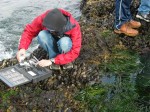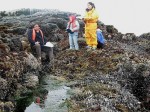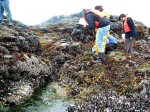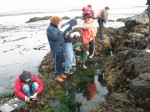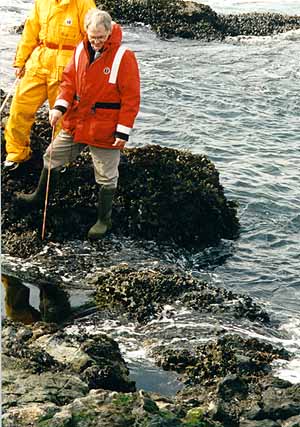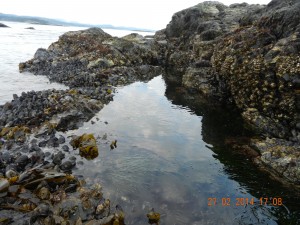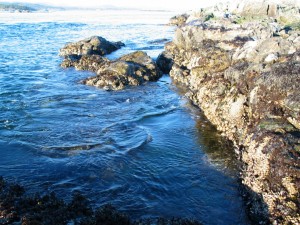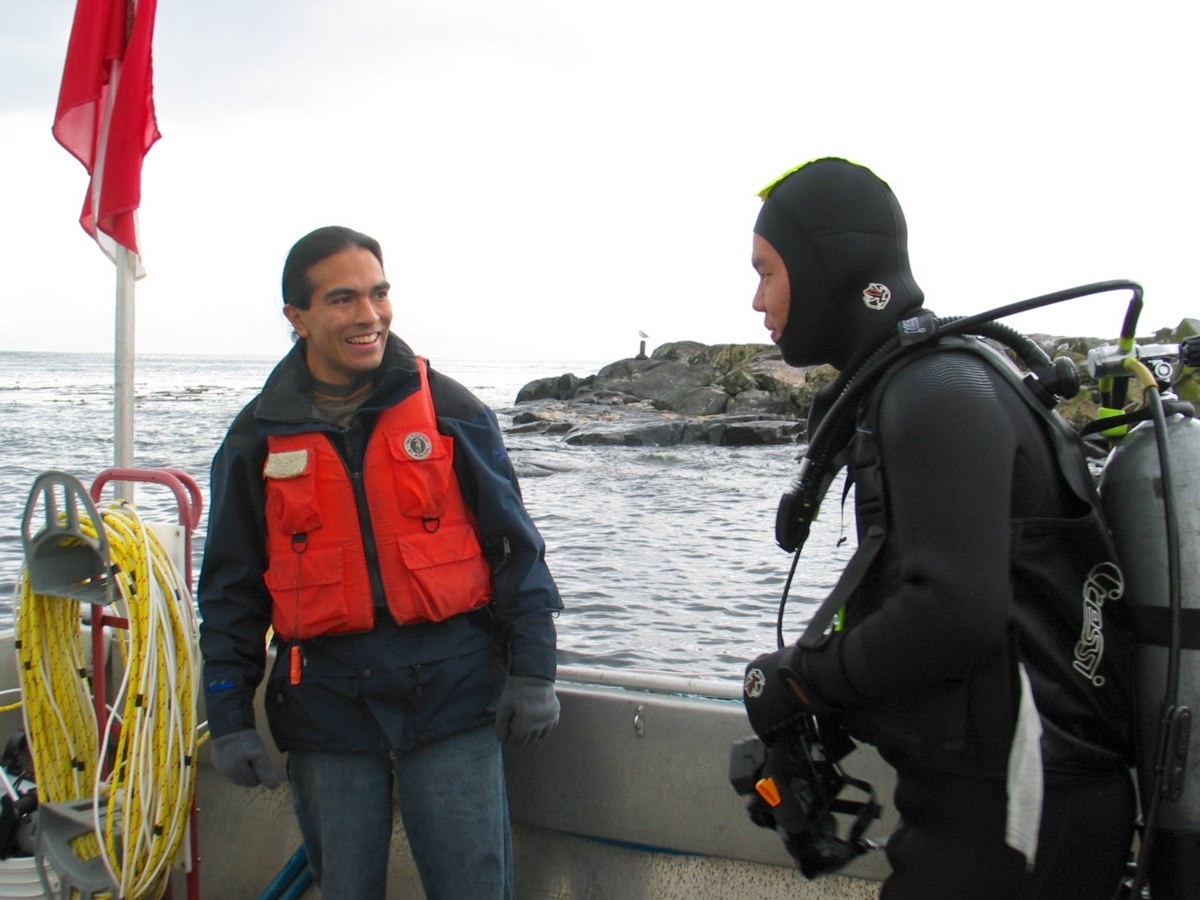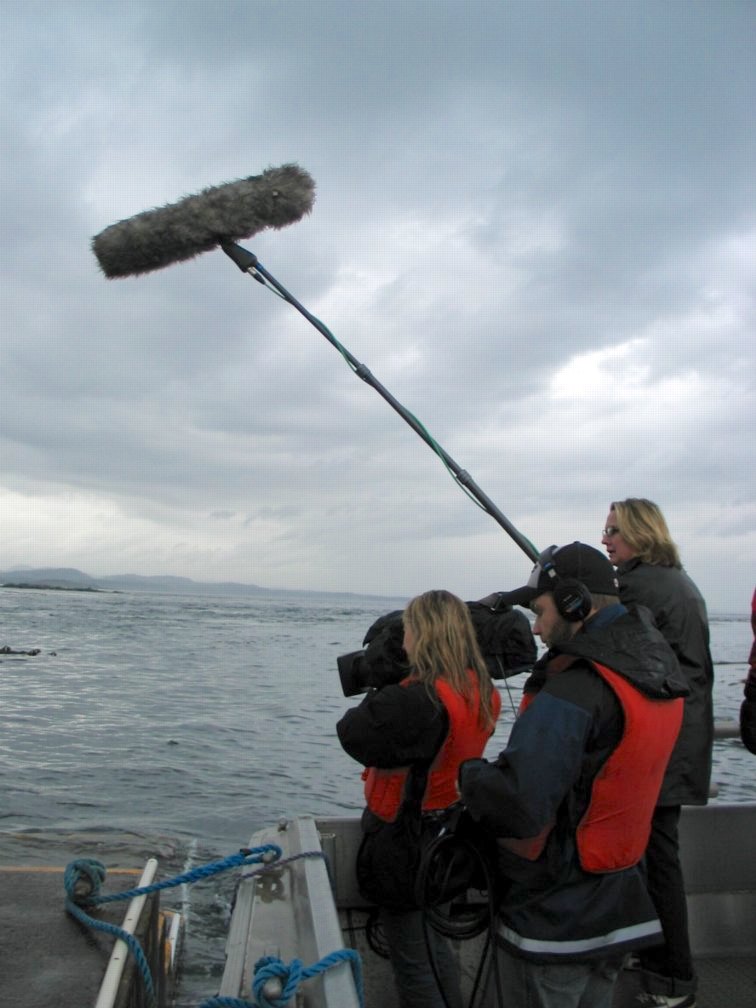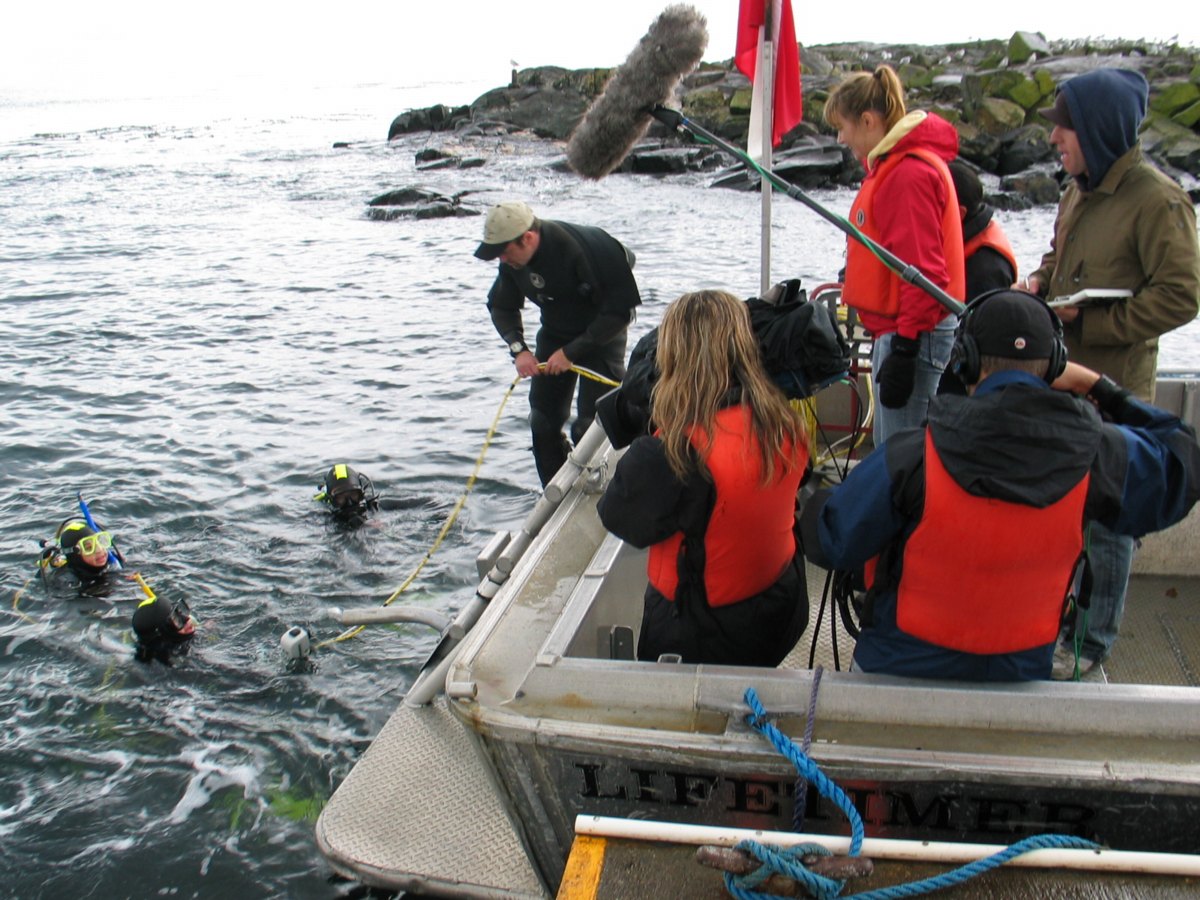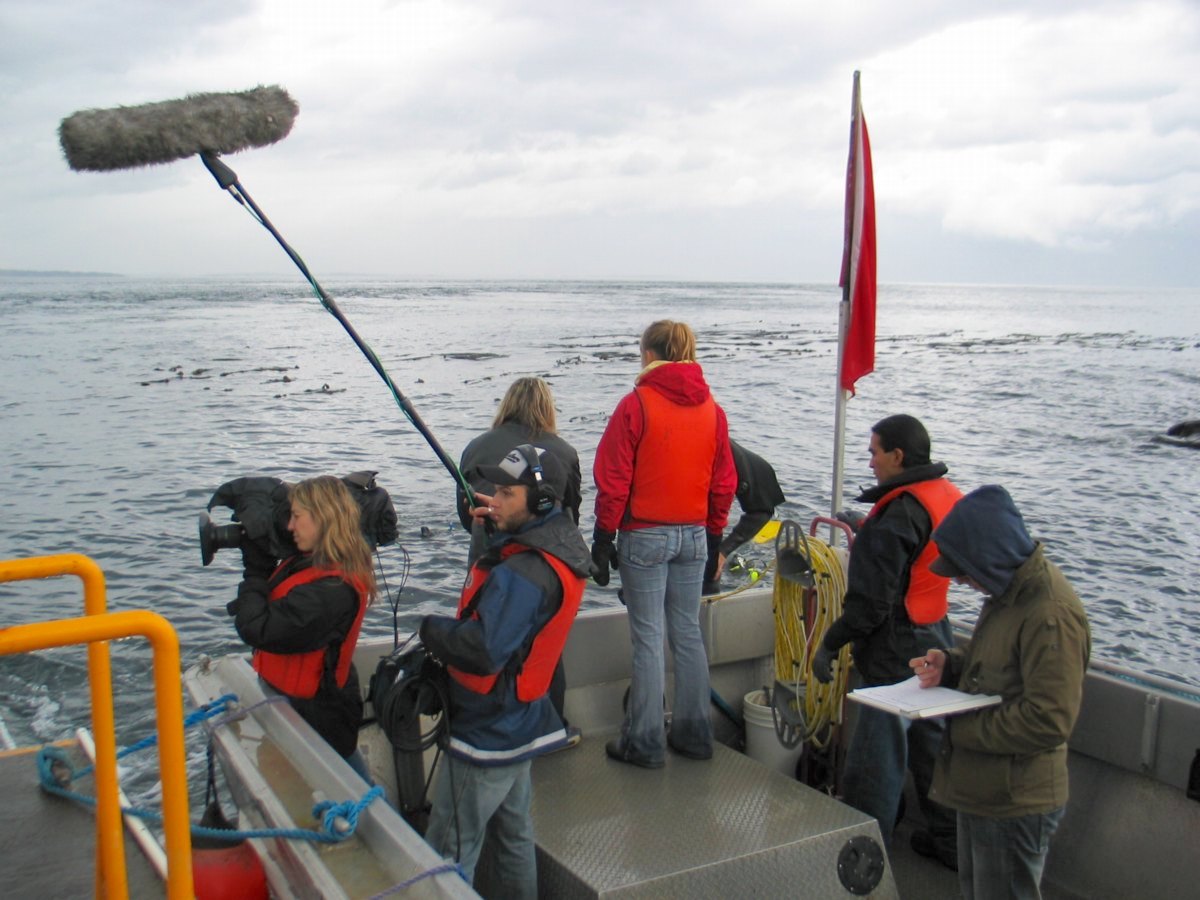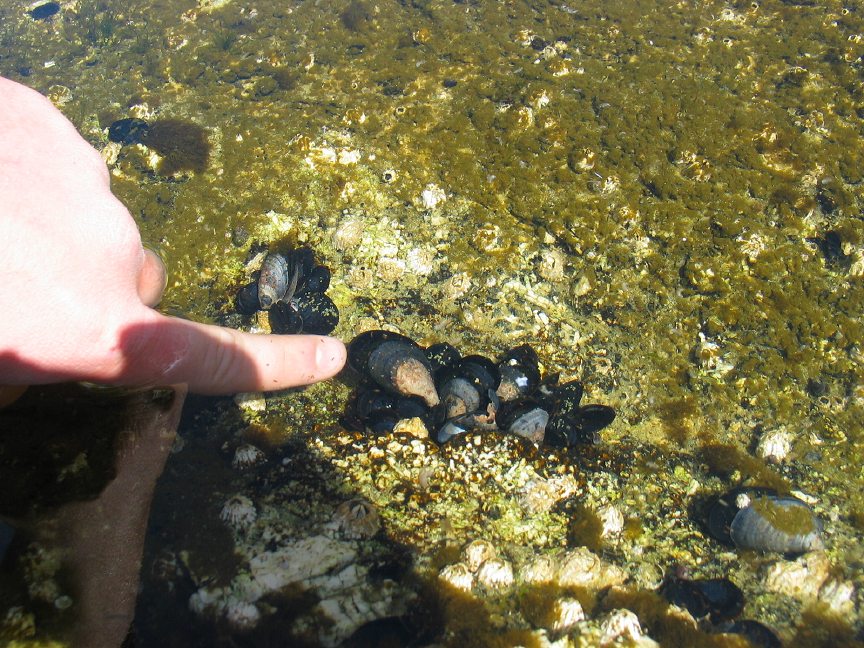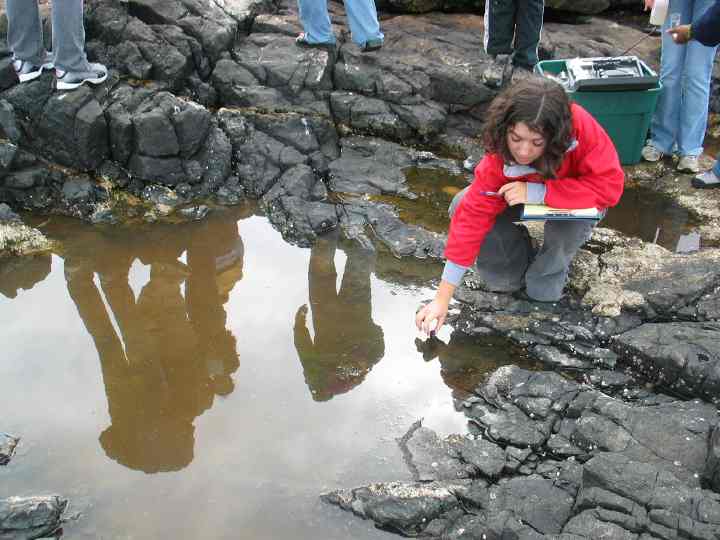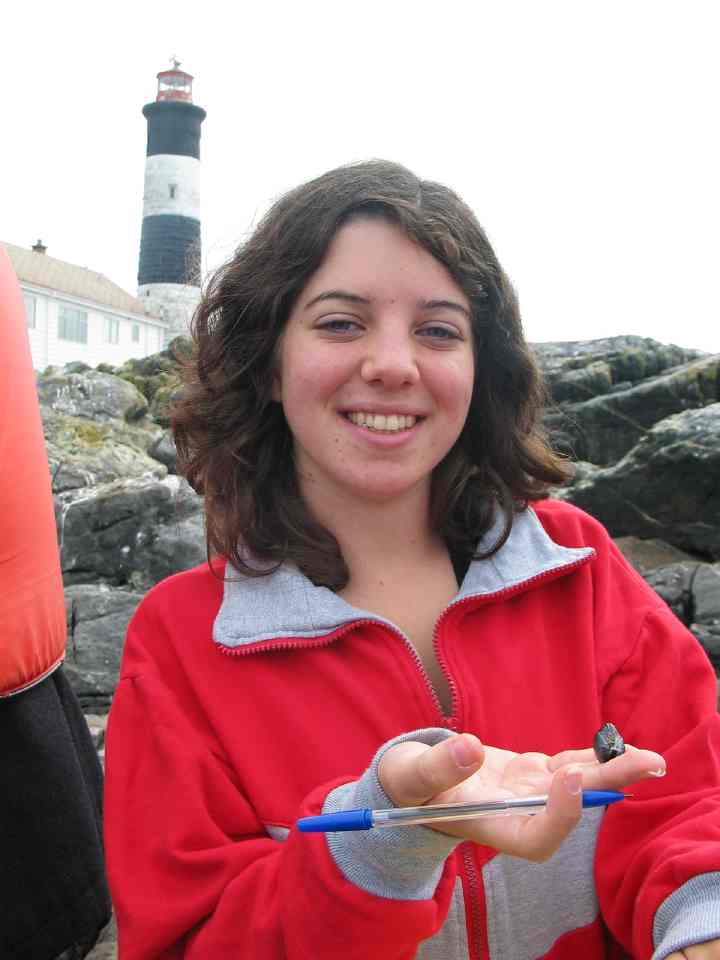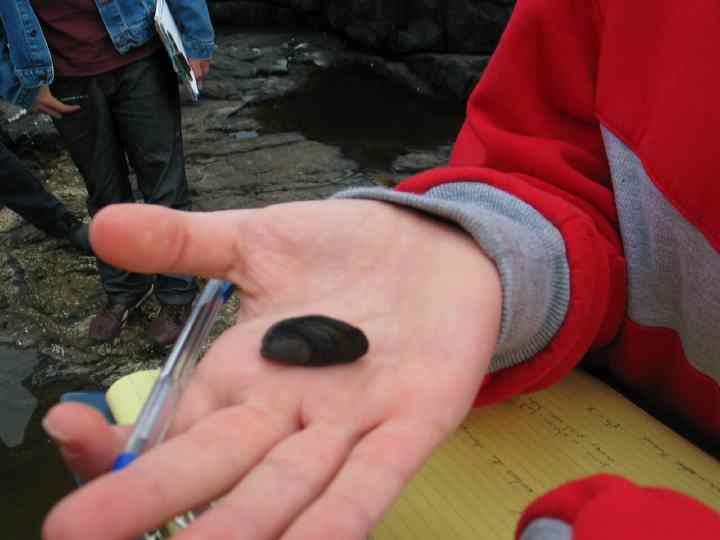On the West side of Great Race Rocks is a tidepool that we have been observing for many years. Dr. Anita Brinckmann-Voss has done research on the seasonality of hydroids in this pool and it is published as:
Brinckmann-Voss, A. 1996. Seasonality of Hydroids (Hydrozoa, Cnidaria) from an intertidal pool and adjacent subtidal habitats at Race Rocks, off Vancouver Island,Canada,
Scientia Marina Advances in Hydrozoan
Biology , Vol 60 (1):89-97
Abstract:
An assemblage of 27 hydroid species was reported from a tide pool in the lower rocky intertidal zone, and compared with 42 hydroids of the adjacent subtidal region. Location of hydroids within the pool, seasonal occurence, growth and sexual maturity were tabulated, and some systematic aspects discussed. Possible causes of hydroid species diversity were considered, including location of the tide pool in an area of tidal rapids, and shading by surfgrass and rock cliffs during low tide
- In September, 2005, the biology class compared the pools at different levels, measuring the abiotic factors
- Students of the biology class, 2005
- The south end of Pool 6 note bleached sea grass, as this is early spring.
- Salinity, Temperature and pH were recorded. This is the view of the north end of the pool
The unique feature about this pool is that it is deep enough – ( 1 meter) and it gets swells that refresh it even when the tide level is low. Garry is standing on the lip of the pool as the water from a swell spills out and cascades down to the lower level of the ocean.
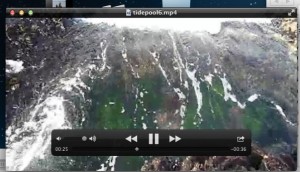 See this video on Tdepool 6 at High Tide:
See this video on Tdepool 6 at High Tide:
see this link for other hydroids: https://www.racerocks.ca/tag/hydroid/

